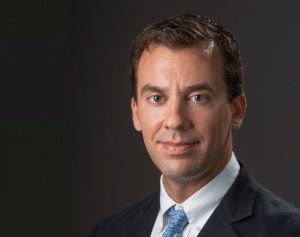Gay Men, HIV & Fatherhood by Dr. Panagiotis Vagenas
 HIV has changed from a lethal pandemic to a manageable chronic condition, allowing HIV-positive men to build the families they desire; what can we do to make that dream more accessible?
HIV has changed from a lethal pandemic to a manageable chronic condition, allowing HIV-positive men to build the families they desire; what can we do to make that dream more accessible?
Gay men are disproportionally affected by the Human Immunodeficiency Virus (HIV) in the Unites States, and around the Western world. In fact, the effects of HIV were first observed among gay men in Los Angeles, and published in the Centers for Disease Control and Prevention’s (CDC) Morbidity and Mortality Weekly Report in 1981. The disease was first named Gay-Related Immune Deficiency (GRID), beginning a cycle of stigma and discrimination.
Almost 40 years later, HIV and the disease it causes, now called Acquired Immunodeficiency Syndrome (AIDS), have led to almost 33 million deaths globally, according to the United Nations (UNAIDS). The advent of highly active antiretroviral therapy (HAART) in 1996, however, was a watershed moment in the fight against HIV: combinations of 3 antiretroviral medications effectively stopped the progression of HIV infection into AIDS, as well as the death toll that ensued. Although socioeconomic issues have prevented therapies from reaching everyone who needs them, in much of the Western world, including the U.S., AIDS-related deaths have become more and more rare. Thus, with fewer HIV-infected people dying, the number of people with HIV living healthy lives has risen. A daily pill effectively preventing HIV infection, known as pre-exposure prophylaxis (PrEP), was introduced in 2012, reducing new HIV infections.
Nevertheless, approximately 38,000 new HIV infections are recorded in the U.S. annually, with an incidence rate of 13.3 cases per 100,000 people, according to the U.S. Department of Health and Human Services (DHHS). Gay and bisexual men are the most affected group in the U.S., with 69% of all new infections in this population. Gay men of color are disproportionally affected, with African American gay men accounting for 25% of all HIV infections and Latino gay men for 20% of all HIV infections. From the 1.2 million people living with HIV in the U.S., 62% are gay or bisexual men, according to the CDC. Among all gay or bisexual men in the U.S., on average 15% are currently living with HIV. These numbers vary in different locations around the country. The original hotspots that emerged in the 1980s and 1990s were large metropolises with tolerant attitudes towards LGBT populations, including New York City, Los Angeles, and Miami. HIV prevalence among gay men in these cities has remained high, at 15%, 13% and 18%, respectively. New hotspots have emerged in the South, however, with a HIV prevalence of 39% among gay men in Jackson, MI and 30% in Columbia, SC. Intensifying state and federal response programs is needed to increase the percentage of HIV-infected people who have access to HAART and HIV-negative people who have access to PrEP, in order to reduce new HIV infections and ensure that people living with HIV can live long, healthy lives.
A recent study from Kaiser Permanente and Harvard researchers showed that people living with HIV in the U.S. have, on average, the same lifespan as HIV-negative people (Marcus JL, et al. 2020). This is a vast change in life expectancy for HIV-positive people from when HIV was first identified, or from the early years of HAART. Normal life expectancy for men with HIV, and the full legalization of gay relationships and marriage across the country, have allowed potential gay fathers with HIV to be able to start families by having children through egg donation, in vitro fertilization (IVF) and surrogacy. Gay men with HIV who take HAART are very likely to become “undetectable”. This means that no HIV is detected in their blood or semen, and it is widely accepted that they cannot transmit HIV to another person. This was first shown by a large clinical trial (HPTN 052) by the HIV Prevention Trials Network, published in the New England Journal of Medicine in 2011; the trial results launched the popular “U=U” slogan, which stands for “undetectable equals untransmissible”. In spite of all the scientific data, there are still concerns among the population about men with HIV and reproduction via surrogacy. The technique of sperm washing, available since the late ‘90s, is frequently used prior to IVF, and involves separating sperm cells from the rest of the seminal fluid, including cellular debris, viruses and bacteria. Therefore, we know from HPTN 052 that an undetectable HIV-positive father cannot transmit HIV; adding a sperm washing step makes IVF and surrogacy an exceptionally safe option for gay men with HIV who want to have children. In spite of sperm washing being technically available for over two decades, it is not widely available in the U.S., with very few fertility clinics offering the service at all, and even fewer conducting it in-house, adding unnecessary obstacles to HIV-positive men who want to have children. Increased access to sperm washing, in addition to continued access to antiretroviral therapy for the control of HIV, will positively affect gay men with HIV who desire a family, by removing a key obstacle from their path forward.

 company
company